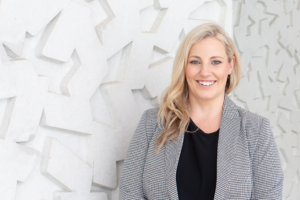Investing comes with risk. It’s not necessarily a bad thing, but you need to understand the risk levels associated with different types of investments and be comfortable with a level that suits your appetite. Generally, the higher the risk, the higher the reward, but the higher the opportunity that you could lose money. There are ways to manage risk by diversification and investing over a longer time.
Why your appetite for risk is important
As Financial Advisers, determining your risk profile is an important aspect when we first meet. There are two main components to this: your financial capacity and your emotional capacity.
Financial capacity considers your investment time horizon and money. The longer you have, the higher your capacity for risk, as your money has longer to ride out the ups and downs of the market. A shorter time frame means a lower capacity for risk, as your money has less time to recover from any market drops where you could lose money.
Emotional capacity is the level of comfort you would have if your investment falls, say, 20 per cent. Some investors will be okay with a drop of 20 per cent if it means further down the track, their money will grow to 40 per cent, if at all. But some investors would not be comfortable seeing a fall in their portfolio and would prefer to focus on protecting and growing their money so they can sleep easy at night.
Having the right mix of investment assets for your risk profile
There’s no right or wrong way; everyone will have different risk profiles that are suitable to their individual needs, goals, and time horizon. It’s important to be in the right type of investment that you are comfortable with. If you ever find that losses keep you up at night, it might be time to reassess your appetite for risk.
If you’ve chosen your own KiwiSaver provider in the past, you will have answered a few questions about your age, financial goals, and how long before you need to access your money. The answers to these questions determine which fund to invest in, usually Conservative, Balanced or Growth. The following graph shows a breakdown of investment assets, the level of expected risk associated with them, and their potential returns.
Building your investment portfolio
Once you have completed a risk profile assessment, your Financial Adviser will have a clearer understanding of the allocation of investment assets that would be suitable for you.
The risk profile is just one of the tools we use to construct a diversified investment portfolio. At Cambridge Partners, we take a holistic approach when constructing your Financial Plan. We also consider your short-, medium-, and long-term financial goals, income requirements, and investment time horizon. We also consider investments you may hold outside the portfolio – such as bank term deposits or other investment providers.
How we create a diversified investment portfolio
Diversification spreads your risk across several different investments. The saying ‘don’t put all your eggs in one basket’ sums up diversification nicely. It means you shouldn’t invest just in one asset, as your risk is tied up in one place, and if it goes wrong, you’ll lose some or all your money.
When you create a diversified investment portfolio, you’re spreading risk across investment managers, companies, industry sectors, asset classes and countries. Your portfolio is generally constructed with growth and defensive assets.
Your growth assets might include New Zealand or international companies (shares), emerging markets, and property. Your defensive assets might have a mix of cash, bonds, and other types of fixed-interest investments.
If you have a lower risk tolerance, your portfolio may be constructed to hold more cash, bonds, or fixed-interest investments and less of higher-risk assets like shares.
If you have a higher risk tolerance, the opposite happens, and your portfolio may be constructed to hold more shares and less cash, bonds, and fixed-interest investments.
Having your own Financial Adviser takes worries around portfolio construction away from you. It’s really important that you understand and are comfortable with the assets you’re invested in. They should align with what you value as an investor too.
When circumstances change
At Cambridge Partners, your Financial Adviser will meet with you regularly to discuss what’s changed in your life. If your goals have changed, you may need to access money sooner. This may mean you will complete a new risk assessment to ensure that your investment portfolio and financial plan meet your needs. Sometimes your situation changes significantly – for example, you might need to finish work or have access to your investments earlier than planned. Often there are no changes, and we continue as planned.
The benefit of having a Financial Adviser is that they can manage any of these changes for you. You don’t have to be an expert in managing your investments; that’s what we’re here for. Contact us today.
Disclaimer: This article is general information and does not consider your financial situation or goals and does not constitute personalised advice. There are no warranties, expressed or implied, regarding the accuracy or completeness of any information included as part of this article.


